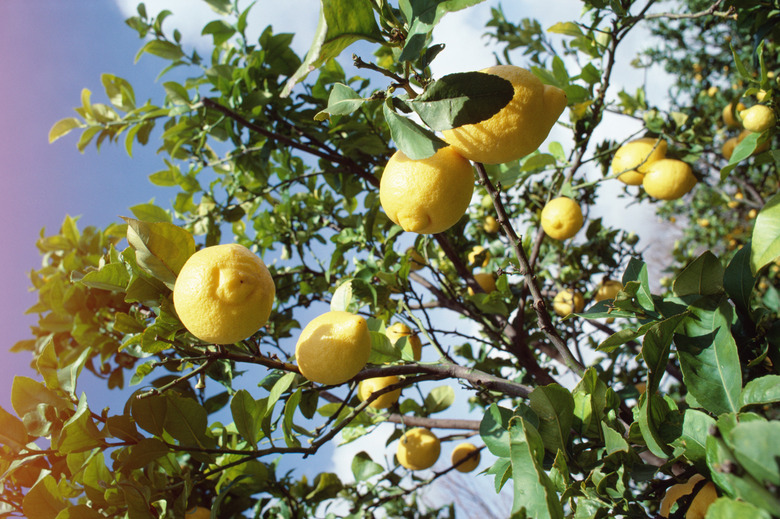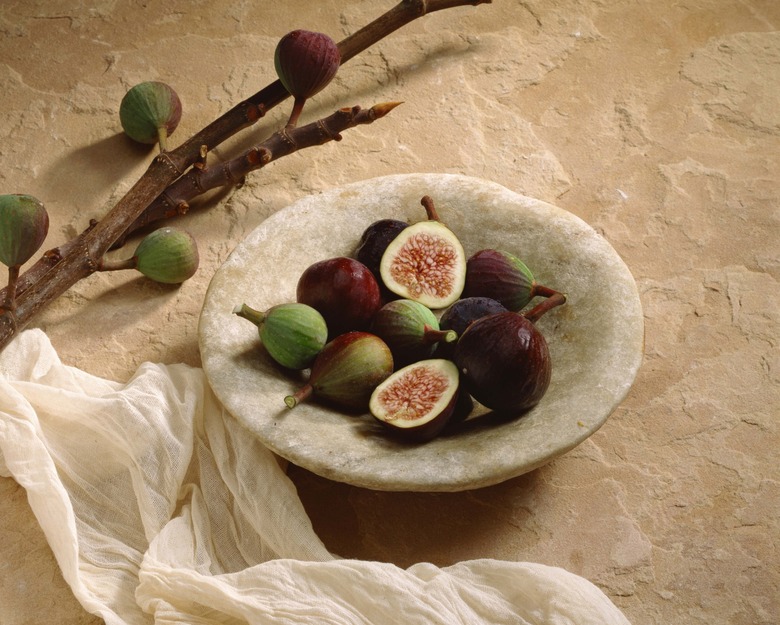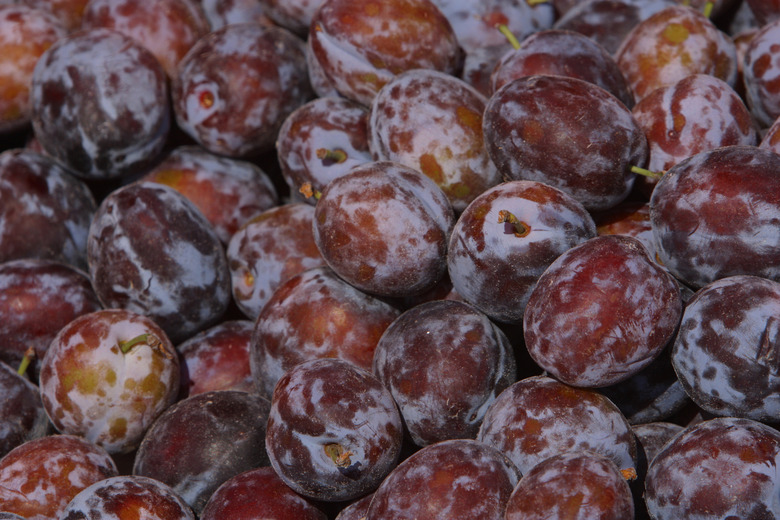Fruit Trees That Grow In Clay Soil
Fruit trees can be a very satisfying crop to grow. While they take three to four years and sometimes longer, to mature and bear fruit, once they start, you will never have to grocery shop for that type of fruit again. If you are able to plant a variety of fruits, you will have a great selection of healthy snacks and meals for many years to come. While there are very few plants that will actually thrive in a clay soil, there are many that will tolerate it and with a few simple corrections, they can thrive.
Step 1
Citrus fruit is acidic enough to be able to tolerate the alkalinity of a clay soil. However, as with all plants and trees, the issue of drainage will have to be addressed. The best way to plant a citrus tree in clay soil is to consider the soil a pot and add a mixture of one part sand to three parts soil and three parts compost. Set the tree on top of the ground – or dig a small, wide hole, place some of the mixture in it and then place the root ball of the tree in the hole, filling the rest of the space with the mixture and mounding the mixture on top of the root ball. Mulch the base of the tree to retain as much moisture as possible as a very clay soil will cause water to run off without being absorbed.
Fig
Step 1
The fig tree can be grown in a wide variety of soils, including clay. Fig trees are small, getting between 10 and 30 feet tall and not more than seven inches in diameter. Fig trees like a dry climate with early spring rains. Sandy soils are preferred, but a clay soil with some sand is much preferred to an acidic soil. They do require adequate drainage, though, and so if your soil is very heavy clay, a fig tree could be planted in an elevated spot, with corrected soil (much like the mixture for citrus) and then mulched.
Step 2
- Citrus fruit is acidic enough to be able to tolerate the alkalinity of a clay soil.
- Mulch the base of the tree to retain as much moisture as possible as a very clay soil will cause water to run off without being absorbed.
Stone Fruits
Step 1
Many stone fruit trees like apricots and plums will do well in clay soils because they have a shallow root system. An apricot tree will get quite large and should be planted about 25 feet from other trees. Plant them the same way you would any other tree. Mix in some peat moss or other compost to lighten the area around the root ball. Mulch the tree as well to preserve the moisture and help with drainage. As with all clay soils, do not over water or "flood," the area at the base of the tree. Doing so will compact a clay soil and reduce the airspaces in the soil.
Step 2
- Many stone fruit trees like apricots and plums will do well in clay soils because they have a shallow root system.


